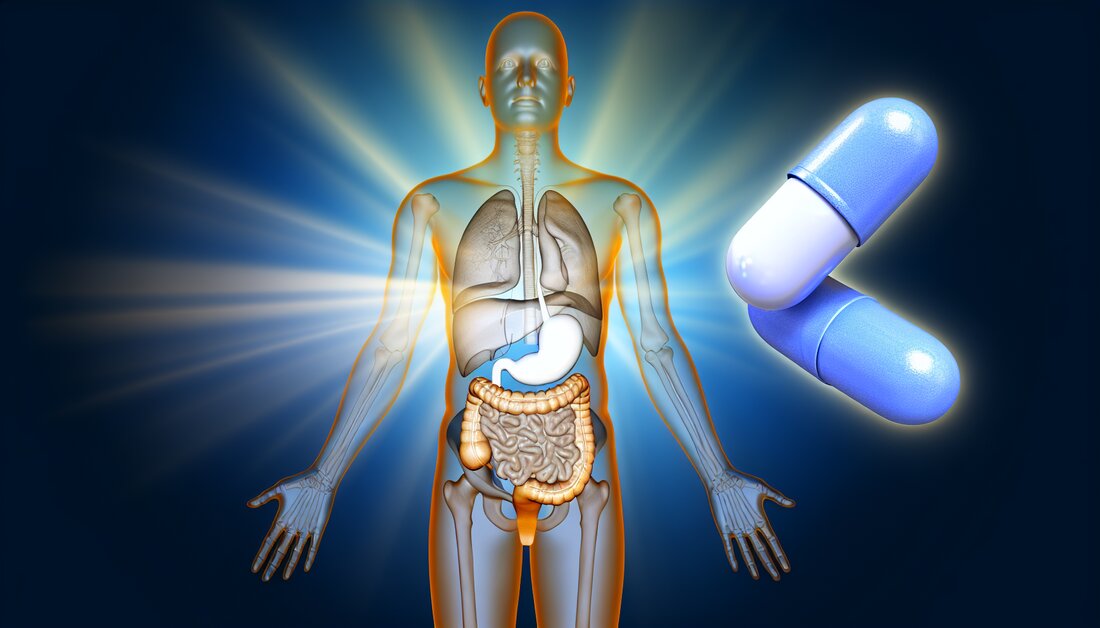New hope for pancreatitis: combination therapy with fenofibrate and acipimox is convincing.
One study identified the combination of fenofibrate and acipimox as an effective treatment for HTG-AP, resulting in rapid recovery times and improved clinical symptoms. Further research is needed.

New hope for pancreatitis: combination therapy with fenofibrate and acipimox is convincing.
Hypertriglyceridemia-induced acute pancreatitis (HTG-AP) is a condition triggered by high levels of triglycerides in the blood, causing inflammation of the pancreas. This form of pancreatitis is increasingly recognized and is potentially serious. People with this condition may experience severe upper abdominal pain, nausea, vomiting, and circulatory problems, among other symptoms. Treating this condition is crucial as it can be associated with numerous health problems and even death.
Treatment options often include medications that lower blood triglyceride levels. However, it is not yet certain which therapy is most effective. A recent study examined the effectiveness of several medications, including atorvastatin calcium, fenofibrate, and acipimox, either individually or in combination.
Analysis and possible changes in practice
The results of the study indicate that the combination of fenofibrate and acipimox is particularly effective. Patients treated with this combination had shorter hospital stays and faster symptom relief. In addition, lower peak values of certain blood values were measured in these patients, which indicate lower disease activity.
If these results are supported by further research, it could mean that standards of care for HTG-AP are changing. Doctors may move more frequently to using combination therapies to ensure faster and more effective treatment. However, additional studies are needed to clarify the exact dosages and possible side effects of this combination.
Explanation of basic terms and concepts
- Hypertriglyceridämie: Ein Zustand, bei dem der Triglyceridspiegel im Blut erhöht ist. Triglyceride sind eine Art von Fett, das im Blut vorkommt und das langfristig hohe Werte potenziell gesundheitsschädlich sind.
- Pankreatitis: Eine Entzündung der Bauchspeicheldrüse, eines wichtigen Organs, das Enzyme und Hormone für die Verdauung und den Blutzuckerhaushalt produziert.
- Atorvastatin Calcium, Fenofibrat, Acipimox: Medikamente, die zur Senkung von Lipiden, wie Triglyceriden, im Blut eingesetzt werden.
- Amylase: Ein Enzym, das normalerweise in der Bauchspeicheldrüse vorkommt und bei Entzündungen in großen Mengen ins Blut gelangt.
- Neutrophile (NEUT): Eine Art von weißen Blutkörperchen, die bei Infektionen und Entzündungen ansteigt.
- C-reaktives Protein (CRP): Ein Marker im Blut, der anzeigt, dass im Körper eine Entzündung vorliegt.
- Procalcitonin: Ein Indikator im Blut, dessen Anstieg auf eine Infektion hinweisen kann.
- APACHE II Skala: Ein Bewertungssystem, das die Schwere einer akuten Erkrankung, wie Pankreatitis, misst.
| Treatment group | Shorter hospital stays | Abdominal pain relief | CRP levels | APACHE II scale |
|---|---|---|---|---|
| Fenofibrate + Acipimox | Yes | Almost | Low | Small amount |
| Atorvastatin calcium | No | Slow | medium | High |
Combination of fenofibrate and acipimox significantly improves the treatment of HTG-AP
Introduction
Hypertriglyceridemia-induced acute pancreatitis (HTG-AP) represents a serious clinical challenge that is associated with significant morbidity and mortality. The aim of the present study was to evaluate the effectiveness of atorvastatin calcium, fenofibrate and acipimox, each individually or in combination, in the treatment of HTG-AP.
method
The study was conducted on 150 HTG-AP patients admitted to the First Hospital of Putian between June 2020 and December 2022. The patients were between 30 and 70 years old, with an average age of approximately 48 years. The study included 90 male and 60 female participants (3:2 ratio). Patients were divided into the following six treatment groups: atorvastatin calcium, acipimox, fenofibrate, fenofibrate + atorvastatin calcium, fenofibrate + acipimox, and no medication. The therapeutic effects and clinical indicators of the groups were compared.
Results
Patients in the fenofibrate + acipimox and fenofibrate alone groups demonstrated significantly shorter hospital stays and faster times to relief of abdominal pain and gastrointestinal dysfunction compared to the other groups. In addition, peak amylase and cholesterol levels were lower in these groups.
| group | Duration of hospital stay (days) | Amylase (max. value) | NEW increase (max. value) | CRP (max. value) |
|---|---|---|---|---|
| Fenofibrate + Acipimox | 10 | 350 | 6 | 2 |
| Fenofibrates | 12 | 370 | 7 | 3 |
| Atorvastatin calcium | 15 | 500 | 9 | 5 |
Neutrophil increase (NEUT) was also lower in the fenofibrate + acipimox, atorvastatin calcium and fenofibrate groups. In addition, the fenofibrate and acipimox groups showed significantly lower peak C-reactive protein (CRP) levels. In contrast, patients in the atorvastatin calcium group had higher procalcitonin levels and a higher APACHE II score, which assesses the severity of acute pancreatitis.
conclusion
The results of this study emphasize the effectiveness of combination therapy with fenofibrate and acipimox in the treatment of HTG-AP, leading to faster recovery and significant improvement in clinical symptoms. These findings are of great importance for clinical practice because combination therapy can be widely applied as an effective treatment strategy. The study highlights the important role of lipid-lowering agents in the treatment of HTG-AP, but also points to the need for further research to investigate optimal dosages and possible side effects.

 Suche
Suche
 Mein Konto
Mein Konto
